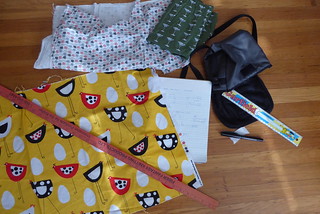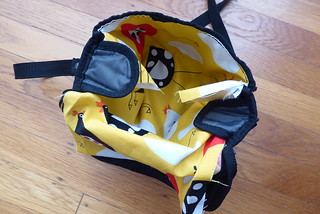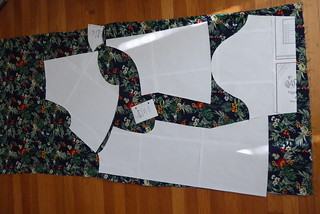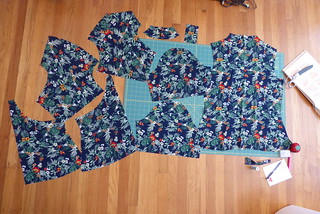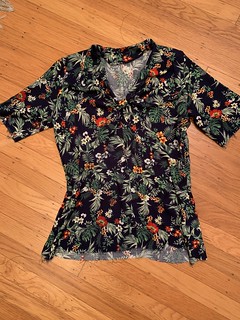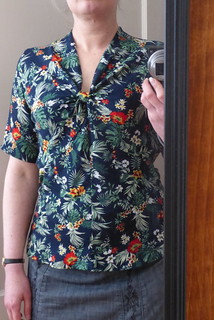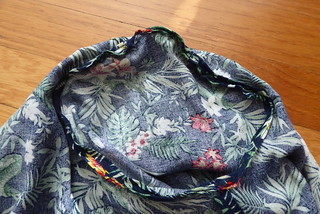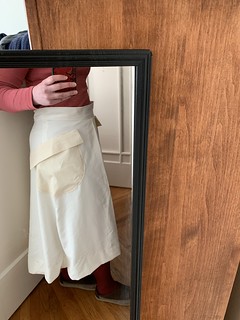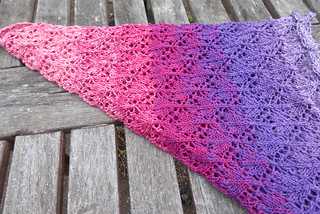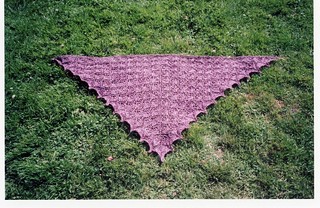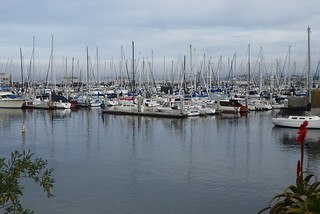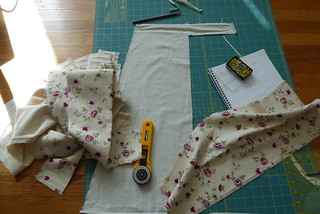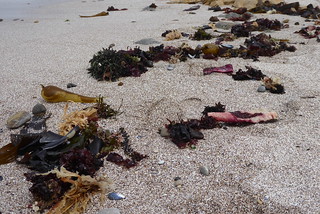When Jupiter and Saturn approached their Great Conjunction, I pulled out the big binoculars that I have hardly used since March. I got a good look at the planets, and a lot of fluff in my eyes. I had forgotten the fuzzy lining of the binoculars case began to disintegrate some time ago, dusting everything in and around the case with what’s probably polyester fibers. Seriously, little black fuzzy bits that static cling to every surface, get in my eyes, it’s probably not good to be breathing around them, and I know it’s not good to wash them down the drain.
I intended to remove and discard the inner lining, but found it’s not a lining; rather, it’s part of the case’s fabric, whatever that’s called when two fabrics are completely fused together into one. What to do… how about a lining to cover the lining? I took careful measurements yesterday, then got out 3 candidates from the fabric stash.
Only the chicken fabric in quilting cotton was long enough, so chickens it is. I cut the pieces with a 1/2″ seam allowance,
(chicken fabric by Robert Kaufman according to its selvedge)
sewed the lining together with surprising ease, even around the dratted corners where I joined the side panels to the main part (handling slippery rayon for hours must have taught me a thing or two about sewing),
(I marked specific points along the edge with a bright pink rollerball pen so it would all line up properly)
laid it out next to the case to ensure it actually fit,
and began back-stitching it to the case. Here it is, about 1/3 done yesterday right before I lost the light:
It’s secret sideways chickens! Added bonus: the bright lining will mean I won’t go hunting for the dark lens caps inside a dark bag anymore.
The mask I made yesterday has secret chickens inside, too. Well, secret eggs and chicken legs, at least. No cord yet, because I’m too stupid today to make a 4-strand braid, apparently (actually, I blame the sprained finger). The two masks I made months ago have secret kitties on the moon inside:
While stitching through the thickest part of the mask, where the seams join, the sewing machine made a terrible clunk/grind noise and stopped picking up the lower thread. Ugh. It was just in the shop a few months ago for pulling the lower thread only halfway around the bobbin. It turns out that’s called a timing problem and costs $99 to fix. Thank goodness the technician wrote the diagnosis on the shop slip; knowing what it’s called is helpful. I spent 45 minutes yesterday learning what a timing problem is and tinkering with the machine and it’s working again. Flush with success (ha!), I also fixed the doohickey in the toilet tank that stopped working properly 3 days ago. Not so much luck with my only pair of sneakers, which went kablooey on Christmas Eve: I went shoe shopping today.
There might just be yarn in the next post.

